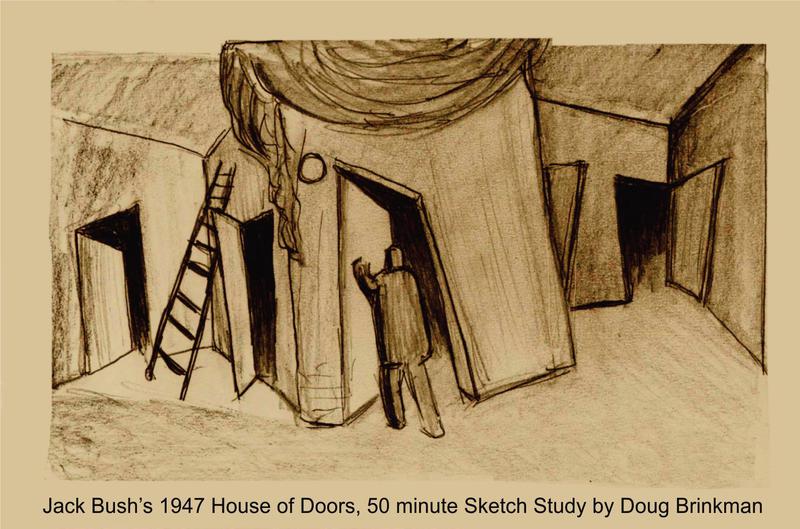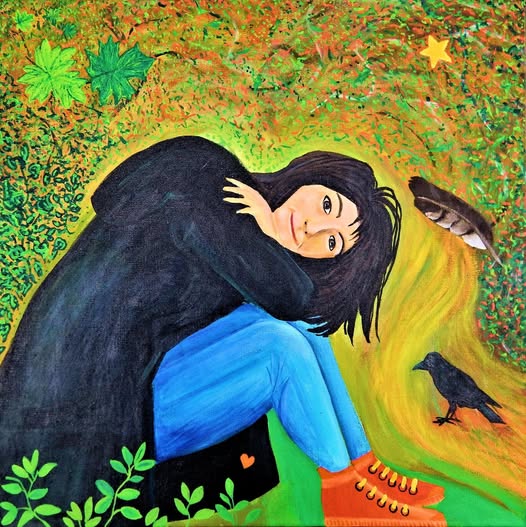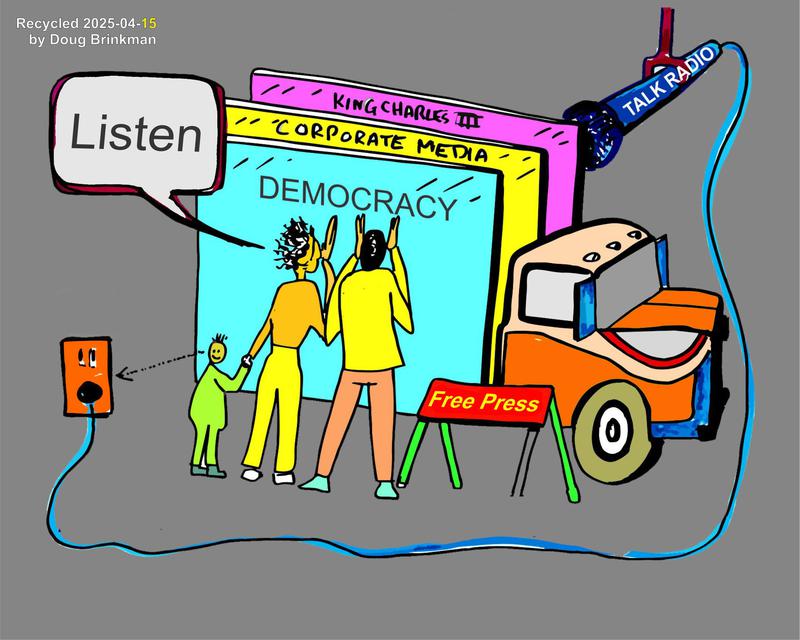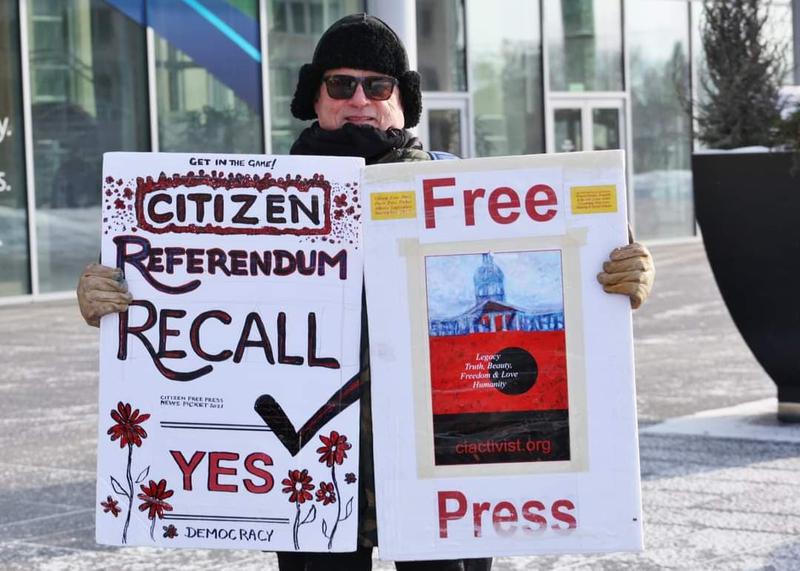Birds of Feather Art Project
Faith🌹Democracy🌹Nature
This year I bought myself a ukulele from the AGA gallery, to commemorate the twenty‑five‑year journey of art shows and painting, 9 Afghan Boys Gathering Firewood (2000–2025). This project began with a portrait of Bruce Cockburn playing a uke beside Lake Louise, and over time it transformed into an abstract memorial for the nine boys killed in Afghanistan by allied forces in 2011. The ukulele is another tribute to this story and I hope to learn to play a few chords and perhaps sing a tune about my painting next season.
HOMME MADE - DUNDEE LAW
Tribute to Virgil Abloh, and Dennis Edney
Left Stage, Exit Right
Freedom from ARTifice
LISTEN Label🍁2021-2025, Point of Order, artwork depicting the (Hon) former Alberta 30th and 31st Legislature Speaker Nathan Cooper, add a little ice cream, my just reward. A young woman, lingering with a tattooed crowd in downtown Edmonton near the library, complimented my artwork. After finishing my rapidly melting ice cream in the 24°C heat, I walked over to her gang to show the backside, titled Disorder. Suddenly, a young man lunged at me. "Get the f*** away from here!" he snapped. Before I could react, the group's matriarch—Mama Tattoo—spoke up. "I like your painting," she said, her voice steady. The young man’s demeanor shifted. He looked at the artwork again, his expression softening. "That's an amazing piece of art," he admitted.
Alberta is assembling a hybrid public–private framework that expands choice, accelerates access to diagnostics, and tests a dual‑practice model within the boundaries of universal care. Whether people support or oppose it, Alberta leads the way for one of the most significant structural experiments in Canadian health care today.
🎨Selfishness often gets a bad rap. It’s branded as greedy, thoughtless, a trait best left on the villain’s shelf. But peel away the stigma, and you’ll find that in art, selfishness can be revolutionary—especially when it’s paired with vision, vulnerability, and integrity. Take the Group of Seven: A.Y. Jackson and Lawren Harris didn’t have their fame handed to them, even though Harris had wealth from the Massey-Harris fortune. They worked hard, committed deeply, and “selfishly” pursued an unshakable idea—that Canadian landscapes deserved their own voice in art. By rejecting European traditions, they carved out space for a uniquely Canadian aesthetic. Their boundaries weren’t barriers—they were a declaration: We paint what we believe. Contrast that with the Indian Group of Seven (Professional Native Indian Artists Inc.). These artists—Norval Morrisseau, Daphne Odjig, Alex Janvier, and others—had no silver platter, no institutional warmth. What they had was fierce resolve. Their “selfishness” wasn’t about ego—it was survival. They refused to be typecast as cultural artifacts and instead demanded recognition as contemporary creators. They built their own galleries, funded their own shows, and shaped a legacy that fought erasure with artistic defiance. And then there’s Jack Bush. Trapped in the commercial art world for decades, he suffered anxiety and depression. He longed for a life of emotional honesty—one where color, not corporate briefs, spoke for him. Inspired by the Group of Seven and later mentored by Clement Greenberg, Bush “selfishly” chose abstraction, ditching safety for soul. His art didn’t chase trends—it chased feeling. And in doing so, it soared internationally.
Freedom to Express and Listen
The Selfish Pursuit of Artistic Truth
🎨 Virgil Abloh’s mantra—“Life is so short you can’t waste even a day subscribing to what someone thinks you can do versus knowing what you can do”—is the distilled essence of mindful selfishness. His career was a refusal to be boxed in: architect, DJ, fashion designer, furniture maker, cultural theorist. Each pivot was “selfish” in the best sense—he pursued what felt true, not what was expected. Like Canada’s Group of Seven, Indian Seven Inc., and Jack Bush, he rejected inherited traditions while freely subscribing to others as sources of study and remix. Abloh broke from rigid definitions of “high fashion.” He blurred streetwear and couture, insisting that sneakers and hoodies could sit alongside tailored suits on the runway. His selfishness wasn’t greed—it was a boundary-breaking declaration: We wear what we believe.
🎨2017, Jodie Smiles after all that... MMIWG, LISTEN Label Wear. Mindful selfishness, the kind that: Defies conformity to pursue personal truth. Sets boundaries that guard mental, emotional, and cultural health. Turns pain into inspiration. Gives others permission to be unapologetically themselves. Yes, privilege played a role. Yes, systemic barriers shaped outcomes. But at the core, each story is a testament to how “selfish” choices—when made with integrity—can spark transformation in not just the artist, but the world they paint. 2026: Left Stage, Exit Right Project.
X
XLife
A Few Kind Words on Dennis Edney
Dennis Edney belongs in this tribute because he represents the kind of courage and civic duty that shaped so much of the community work here in Edmonton. I had the privilege of working alongside politicians, activists, and lawyers who refused to look away from hard cases, and Dennis was one of the clearest examples of that commitment. His long fight to free Omar Khadr wasn’t just legal work — it was an act of stubborn humanity in a moment when it was easier for the country to turn its back.
This year, Omar himself added paint to another collective piece — A Crow’s Nest and Two Punjabi Ladies, created by nineteen painters before he marched with the Palestinian community. That gesture, like Dennis’s work, reminds me how art, justice, and public life keep folding into each other in unexpected ways. Dennis was born in Dundee, Scotland, in the shadow of Dundee Law — the volcanic hill that watches over the city. That’s why he appears in this painting as HOMME MADE – DUNDEE LAW: a nod to the place that shaped him, and to the way he carried that grit into his life’s work here in Edmonton. His presence in this tribute is simple: some people change the civic weather around them. Both Virgil and Dennis did.












